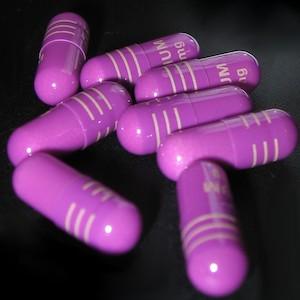The protection of intellectual property is vital to innovation. If anyone can just take something you created -- be it a song or a drug -- without proper compensation, there would be little reason to develop new things. Artists and inventors have to get paid, too.
This was elaborated nicely by Patrick Kilbride, Senior Vice President of the Global Innovation Policy Center at the U.S. Chamber of Commerce, in an interview with ACSH. Because biotechnology usually involves not a single breakthrough but a series of innovations, Mr. Kilbride says, "Each stage must be protected with intellectual property rights."
That, however, is predicated upon the pharmaceutical industry playing fairly; that is, they cannot seek patent protection for things that are not patentable. Yet, a new article in Nature Biotechnology declares that some companies are doing just that.
How Big Pharma Uses Logically Impossible Patents to Block Innovation
The authors of the article focus their attention on Humira, the world's best-selling drug as measured by total revenues. (The drug is an antibody that blocks inflammation, and it is used to treat arthritis, among other things.) Prices keep increasing and there is no competition. Why? Because AbbVie, its manufacturer, has about 250 patents on it.
There is simply no reasonable explanation for how a single drug can have that many patents. According to the authors, when Humira was launched in 2002, AbbVie only had 27 patents on it. They filed another 220 after the product was for sale. Worse, the authors say that at least 20 patents were filed more than one year after launch of the drug which, according to law, would make the patents invalid.
The authors conclude, "Many other biologics limit competition through both secrecy and expansive patent portfolios." But these aren't the only patent tricks that companies pull.
ACSH Acting President Dr. Josh Bloom, a former research chemist in the industry, explained how AstraZeneca gamed the patent system for the little purple pill called Nexium. The underlying chemistry is fairly complicated, but the bottom line isn't: The company first created Prilosec (a drug that is a 50/50 "racemic" mixture, which means only half of the drug actually works in the body). Then, they created a pure version of the drug and called it Nexium. Ultimately, it's the same drug, just a higher dose. Yet, they got a patent for it.
Other companies that make insulin use similar tactics to prevent generic competition. In this case, manufacturers constantly tweak insulin to make it better. To their credit, insulin really has gotten better over the years. However, each tweak earns a new patent (or several new patents), chasing potential generic competitors away.
Finding the right balance between protecting intellectual property and encouraging the development of cheaper drugs is incredibly complex. However, the pharmaceutical industry doesn't garner any sympathy when it pulls dirty tricks.
Source: W. Nicholson Price II & Arti K. Rai. "How logically impossible patents block biosimilars." Nature Biotechnology 37: 862–863. Published: 2-Aug-19. DOI: 10.1038/s41587-019-0196-x




